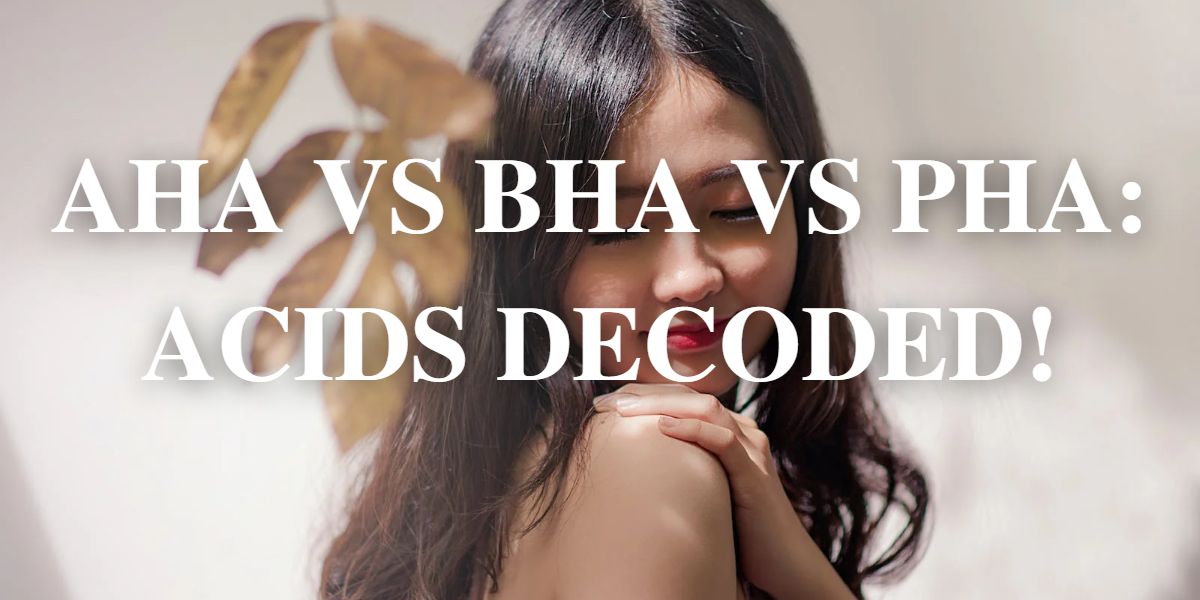Are you feeling overwhelmed by the different types of acids in skincare products? AHAs, BHAs, and PHAs are all types of exfoliants that can be used to improve the appearance and texture of the skin, but it can be difficult to know which one is right for you. In this AHA vs BHA vs PHA post, we’ll decode the differences between AHAs, BHAs, and PHAs and help you determine which one is best for your skin type and concerns. Keep reading to learn more about these powerful exfoliants and how they can benefit your skin.
Alpha hydroxy acids (AHAs)
Jump To:
Alpha hydroxy acids (AHAs) are a group of natural and synthetic substances that are used in skin care products to exfoliate the skin. They are called alpha hydroxy acids because they contain a hydroxyl group (-OH) on the alpha carbon atom of the molecule. AHAs are found in various fruits and milk, and can also be made synthetically. Some common AHAs include glycolic acid, lactic acid, and mandelic acid.
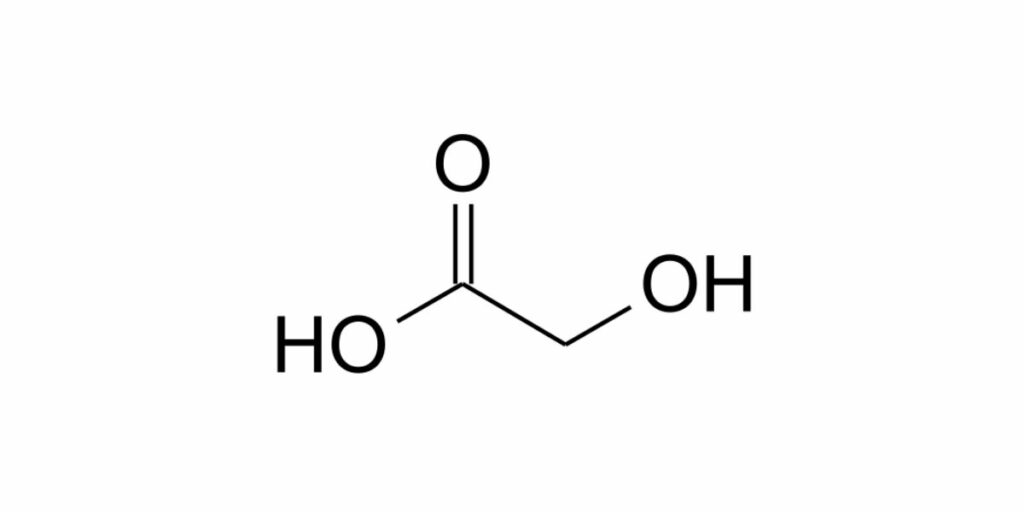
AHAs work by breaking down the bonds between the dead skin cells on the surface of the skin, allowing them to be shed. This helps to improve the texture and appearance of the skin by promoting the growth of new, healthy skin cells. AHAs are most often used to treat dry or sun-damaged skin, fine lines and wrinkles, and uneven skin tone. They are usually applied to the skin as a toner, peel, or lotion, and can be found in a variety of skincare products, including cleansers, toners, creams, and serums.
AHAs can be effective in improving the appearance of the skin, but they can also cause side effects, such as dryness, redness, and irritation. It is important to use AHAs carefully, as directed by a dermatologist or other skin care professional, and to use sunscreen when using AHA products, as they can increase the skin’s sensitivity to the sun.
Common AHAs present in skincare products
Here is a list of common AHAs present in skincare products:
- Glycolic acid
- Lactic acid
- Citric acid
- Malic acid
- Tartaric acid
- Mandelic acid
Beta hydroxy acids (BHAs)
BHA, or butylated hydroxyanisole, is a synthetic antioxidant that is sometimes used in skincare products as a preservative or to stabilize the product. It is also sometimes used as an exfoliant to help remove dead skin cells and improve the appearance of the skin.
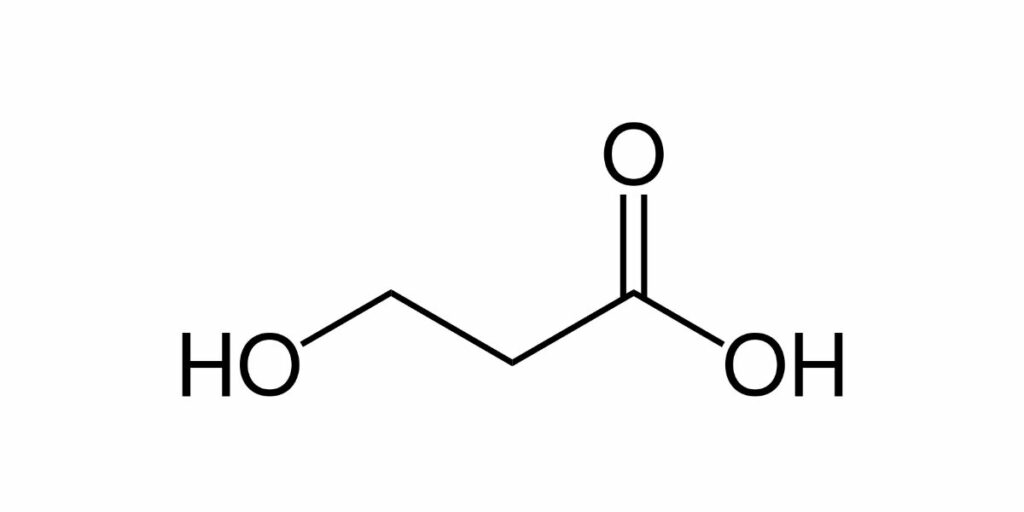
BHA is oil-soluble, which means that it can penetrate into the pores and may be more effective than alpha-hydroxy acids (AHAs) at exfoliating the skin and unclogging pores. It often treats a variety of skin concerns, including acne, blackheads, and uneven skin tone.
As with any skincare ingredient, it is important to use caution when using products that contain BHA. Some people may be sensitive to BHA or may experience irritation when using products that contain it. If you are using a product that contains BHA and experiences any negative side effects, such as redness, itching, or rash, you should stop using the product and consult a dermatologist if necessary. It is always a good idea to do a patch test before using a new skincare product to make sure that you are not sensitive to any of the ingredients.
Common BHAs present in skincare products
Some common BHAs found in skincare products include:
- Salicylic acid
- Betaine salicylate
Other less common BHAs found in skincare products include:
- Ethyl salicylate
- Sodium salicylate
- Triclosan
Polyhydroxy acids (PHAs)
PHA stands for polyhydroxy acid, which is a type of alpha hydroxy acid (AHA) that has the ability to exfoliate the skin and stimulate collagen production. PHA is a gentle exfoliant that is less irritating than other AHAs, making it suitable for sensitive skin types.
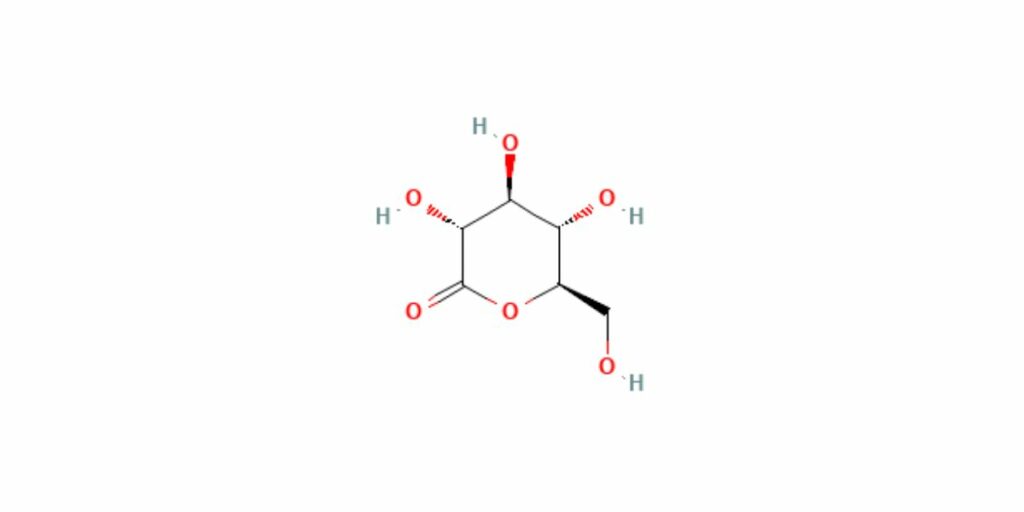
These PHA products can improve the appearance of sun-damaged skin, uneven skin tone, and fine lines and wrinkles. They can also help to improve the overall texture of the skin by removing dead skin cells and promoting cell turnover. PHA products are typically applied to the skin in the form of a toner, serum, or cream.
It’s important to use PHA products as directed, as overuse or improper use can lead to dryness or irritation of the skin. It’s also important to use sunscreen with a high SPF when using PHA products, as they can increase the skin’s sensitivity to the sun.
Common PHAs present in skincare products
Some common PHA found in skincare products include:
- Gluconolactone
- Lactobionic acid
Other less common PHA found in skincare products include:
- Glucosamine
- Maltobionic acid:
AHA vs BHA vs PHA: Benefits
AHAs, BHAs, and PHAs are all types of exfoliants that can improve the appearance and texture of the skin. Exfoliants work by removing dead skin cells from the surface of the skin, which can help to improve the appearance of fine lines, uneven skin tone, and rough texture.
AHAs are water-soluble exfoliants that are good for people with dry or sensitive skin. They work by breaking down the bonds between dead skin cells and can help to improve the overall health of the skin.
BHAs are oil-soluble exfoliants that are good for people with oily or acne-prone skin. They work by penetrating the pores and removing excess oil and dirt.
PHAs are a gentle type of AHA that is suitable for sensitive skin types. They can help to improve the appearance of sun-damaged skin, uneven skin tone, and fine lines and wrinkles.
Overall, using exfoliants can lead to smoother, brighter, and healthier-looking skin. It’s important to use these products as directed and to follow up with a moisturizer to help hydrate the skin. It’s also important to use sunscreen with a high SPF when using these products, as they can increase the skin’s sensitivity to the sun.
AHA vs BHA vs PHA: Potential skincare side effects
AHAs (alpha hydroxy acids), BHAs (beta hydroxy acids), and PHAs (polyhydroxy acids) are all types of exfoliants that can be used to improve the appearance and texture of the skin. However, it’s important to use these products as directed, as overuse or improper use can lead to side effects.
Some potential side effects of AHAs include dryness, redness, and irritation. These side effects are more likely to occur with higher concentrations of AHAs or with more frequent use. AHAs can also increase the skin’s sensitivity to the sun, so it’s important to use sunscreen with a high SPF when using AHA products.
BHAs can also cause dryness, redness, and irritation, especially in people with sensitive skin. BHAs can also cause mild stinging or burning when applied to the skin.
PHAs are generally well-tolerated and are less likely to cause irritation than AHAs or BHAs. However, it’s still important to use PHA products as directed and to follow up with a moisturizer to help hydrate the skin.
Overall, it’s important to patch-test any new skincare product before using it on your entire face. If you experience any side effects, stop using the product and consult a dermatologist if necessary.
AHA vs BHA vs PHA: Key differences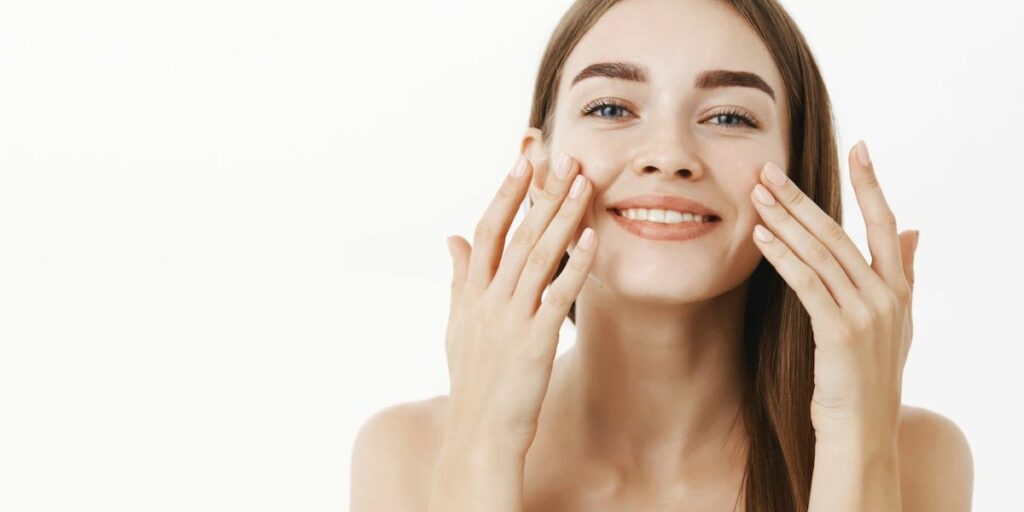
AHAs (alpha hydroxy acids), BHAs (beta hydroxy acids), and PHAs (polyhydroxy acids) are all types of exfoliants that can improve the appearance and texture of the skin. However, there are some key differences between these types of exfoliants.
One key difference is the type of acid:
- AHAs are water-soluble and are from fruits and milk. They work by breaking down the bonds between dead skin cells and are best for people with dry or sensitive skin.
- BHAs are oil-soluble and are from salicylic acid. They work by penetrating the pores and removing excess oil and dirt and are best for people with oily or acne-prone skin.
- PHAs are a type of AHA that has the ability to exfoliate the skin and stimulate collagen production. PHAs are gentle exfoliant that is suitable for sensitive skin types.
Another key difference is how the exfoliants work:
- AHAs work by exfoliating the surface of the skin.
- BHAs work by exfoliating inside the pores.
- PHAs work by exfoliating the surface of the skin and stimulating collagen production.
Overall, the best exfoliant for you will depend on your skin type and concerns.
AHA vs BHA vs PHA: How do you know skin needs?
The best type of exfoliant for you will depend on your skin type and concerns. Here are some general guidelines for choosing between AHAs, BHAs, and PHAs:
- If you have dry or sensitive skin, you may benefit from using an AHA (alpha hydroxy acid). AHAs are water-soluble exfoliants that are generally gentler on the skin and are good at improving the appearance of fine lines, uneven skin tone, and rough texture.
- If you have oily or acne-prone skin, you may benefit from using a BHA (beta hydroxy acid). BHAs are oil-soluble exfoliants that are effective at improving the appearance of acne, blackheads, and enlarged pores. They can also help to reduce inflammation and improve the overall health of the skin.
- If you have sensitive skin, you may benefit from using a PHA (polyhydroxy acid). PHAs are less irritating than other AHAs, making them suitable for sensitive skin types. They can improve the appearance of the skin, uneven skin tone, fine lines, and wrinkles.
It’s also important to consider your overall skincare routine and to use these exfoliants as directed. It’s to use exfoliants 1-2 times per week, depending on your skin’s tolerance. Follow up with a moisturizer to help hydrate the skin, and be sure to use sunscreen with a high SPF when using these products, as they can increase the skin’s sensitivity to the sun.
AHA vs BHA vs PHA: Wrapping up
In conclusion, AHAs, BHAs, and PHAs are all powerful exfoliants that can be to improve the appearance and texture of the skin. AHAs are water-soluble exfoliants that are best for people with dry or sensitive skin and are effective at improving the appearance of fine lines, uneven skin tone, and rough texture. BHAs are oil-soluble exfoliants that are best for people with oily or acne-prone skin and are effective at improving the appearance of acne, blackheads, and enlarged pores. PHAs are gentle exfoliant that is suitable for sensitive skin types and are effective at improving the appearance of sun-damaged skin, uneven skin tone, and fine lines and wrinkles.
It’s important to use these exfoliants as directed and to follow up with a moisturizer to help hydrate the skin. It’s also important to use sunscreen with a high SPF when using these products, as they can increase the skin’s sensitivity to the sun. By understanding the differences between AHAs, BHAs, and PHAs and how they can benefit your skin, you can choose the right exfoliant for your skincare routine and achieve smoother healthier-looking skin.
